DINKY 358 U.S.S ENTERPRISE (1976-1981):
The 358 U.S.S. Enterprise was the first Dinky model licensed from NBC’s Star Trek TV Series. It was the first Star Trek toy made from die-cast metal and Dinky had the worldwide rights.

It was soon followed by the 357 Klingon Battle Cruiser from the same series.

The model featured opening bottom bay doors which acted as a stand. In the bay was a detachable plastic shuttle craft.




The model fired ‘photon torpedoes’, which were in fact yellow or white plastic discs which were propelled out of the front of the space ship by flicking the metal bridge at the top of craft.

There were 8 discs or ‘torpedoes’ provided.

Originally supplied with yellow discs later models had white discs similar to those provided with the 357 Klingon Battle Cruiser. The white discs had random letters on the top

Although the shuttle was approximately the right shape there was very little detail in the one piece orange plastic casting. It sat in a launch bay underneath the model and was fixed by an extended lug and could be easily removed. Hence this part is often missing from models on sale.
In reality the shuttle was not to scale, it was far too big. If it had been true to the actual prop, it should have exited from the ‘hangar doors’ at the back of the ship. The upside of this design was that the bay doors when opened acted as a stand.

There are 3 shuttle colour versions. The common production orange and the rarer white/cream and red versions.
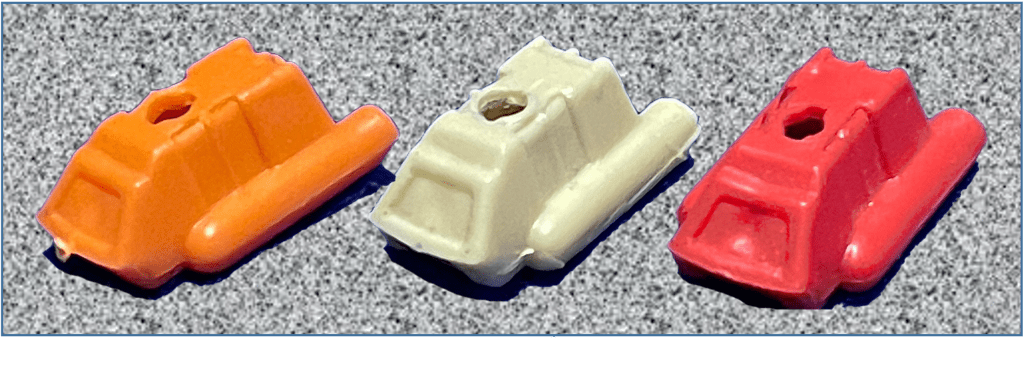
Also provided in the box were additional decals and instructions.

VARIANTS:
DECALS/STICKERS
When the model was first introduced the main engines had decals rather than paper stickers. The variants with decals were only available with the all cardboard box although they could also have paper stickers with this box as well. The collector who provided this information suggested that the decals were short lived – perhaps for only one year.


Note the decal had a thicker font style.
DOOR CLIPS
A few models had a single clip to hold the bay doors in place, most had double clips
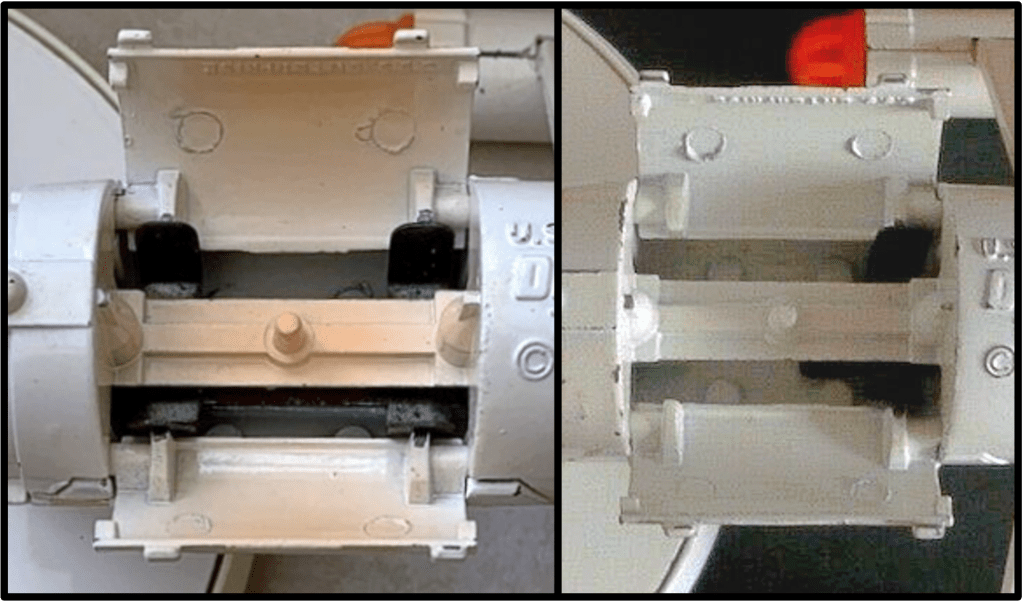
DETAILING
Two variants featuring different coloured engine nacelles and front radar sensors have been identified. The red version parts have been inspected and appear genuine.

The yellow version has only been seen on an auction site.

TV SERIES:
The 358 U.S.S. Enterprise was modelled on the ship of the same name in the Star Trek TV series. In charge was Captain Kirk ably assisted by First Officer Spock whose pictures adorned the later version of the box.
PROP v ACTUAL:

The model was an accurate version of the actual prop. Irritatingly though the engines were bent downwards slightly giving the model a more stubby look.

The small plastic shuttle craft was based on the Galileo shuttle featured occasionally in the Star Trek TV series.

PRE-PRODUCTION:
A pre-production pink version of the plastic front section was sold by Vectis Auctions.

In the 1980 trade catalogue a new version of the U.S.S.Enterprise was shown. This model was based on a later version of the Starship Enterprise which was featured in the first Star Trek Movie.

A comparison the the first and later version of the U.S.S. Enterprise.

BOXES:
There were two box types, the first an all cardboard version (1976-78) and the second a window box.


There was a cardboard inner liner to protect the heavy model and the box.

The second box type was a window box

GIFT SETS:
Under the heading ‘Three Great TV Series Gift Sets’, the 1978 trade catalogue announced the 306 Space Gift Set which included the 357 Klingon Battle Cruiser the 358 U.S.S. Enterprise and the ‘new’ 361 War Chariot in a never commercially released blue livery. This set was never released commercially.

By the time the 1978 consumer catalogue was released the set had been replaced with the 309 Star Trek Gift Set a far more logical (no pun intended) issue.

The 309 Set was released in a window box and the models and accessories were identical to those issued a individual models.

The rear of the box had a cut out and make ‘Star Trek Communicator’,

whilst the bottom of the box had landscape and badges to make.

The 309 Gift set also appeared in the Dinky 1979 consumer catalogue.

CATALOGUES:












ADVERTS:



MISCELLANEOUS:
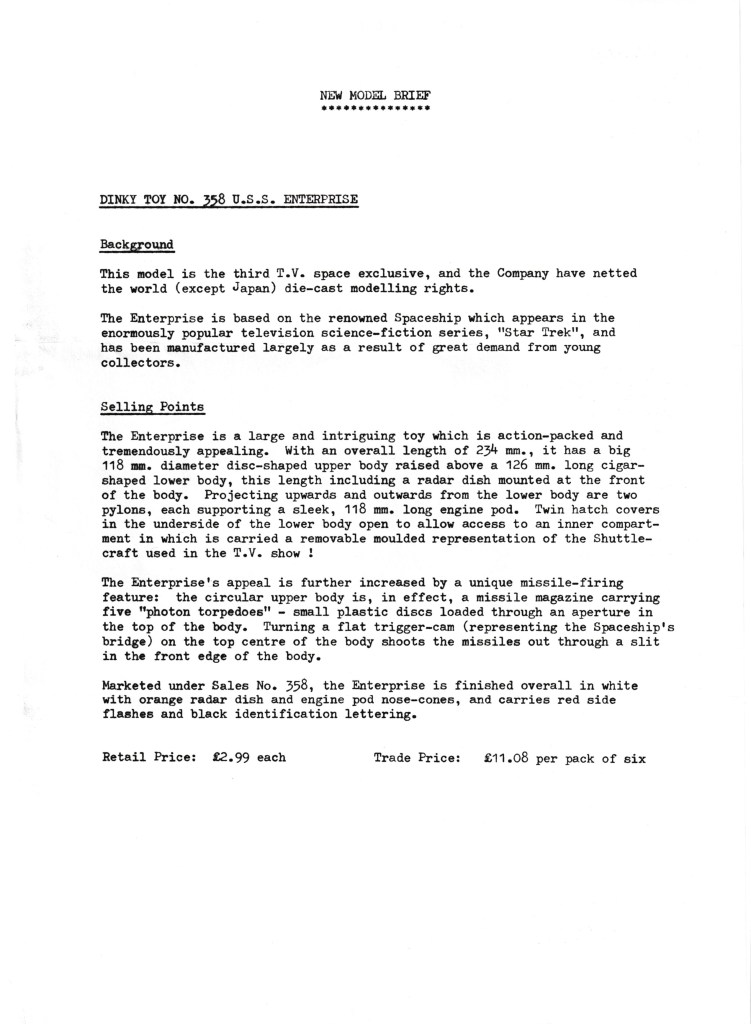
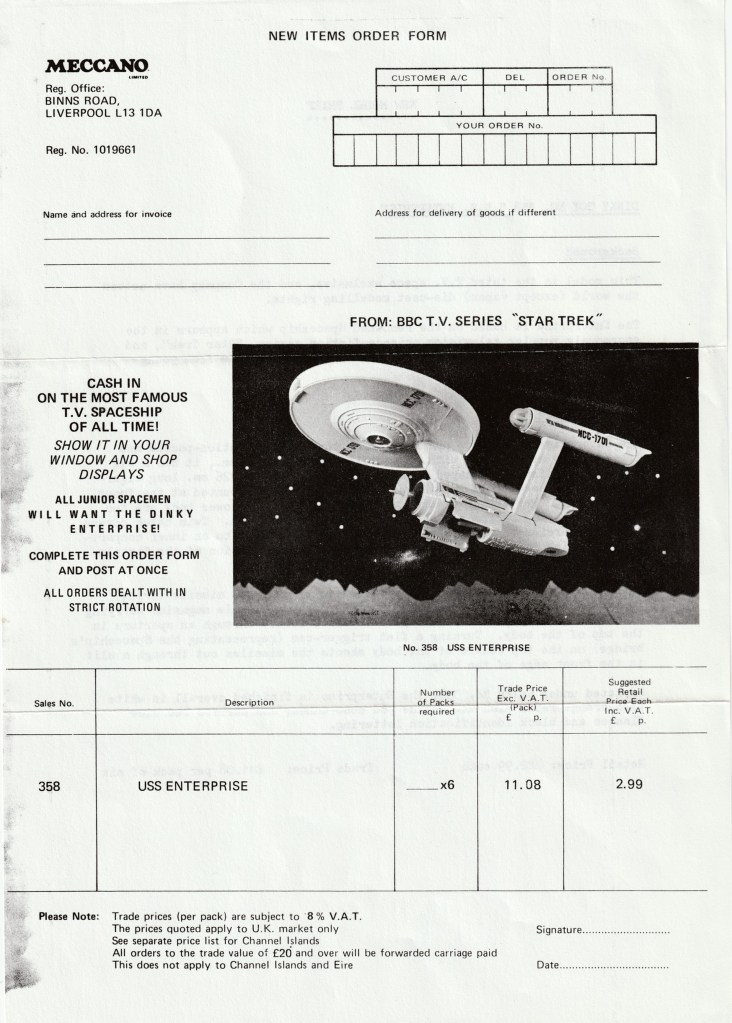
A 1976 trade ‘Order Form’ telling of the launch & price of their new model. The Trade Price for a pack of 6X Enterprises was £11.08 +vat with a Retail Price of £2.99 each.
Comparing the size of Dinky 358 U.S.S. Enterprise with the Dinky 803 U.S.S. Enterprise.

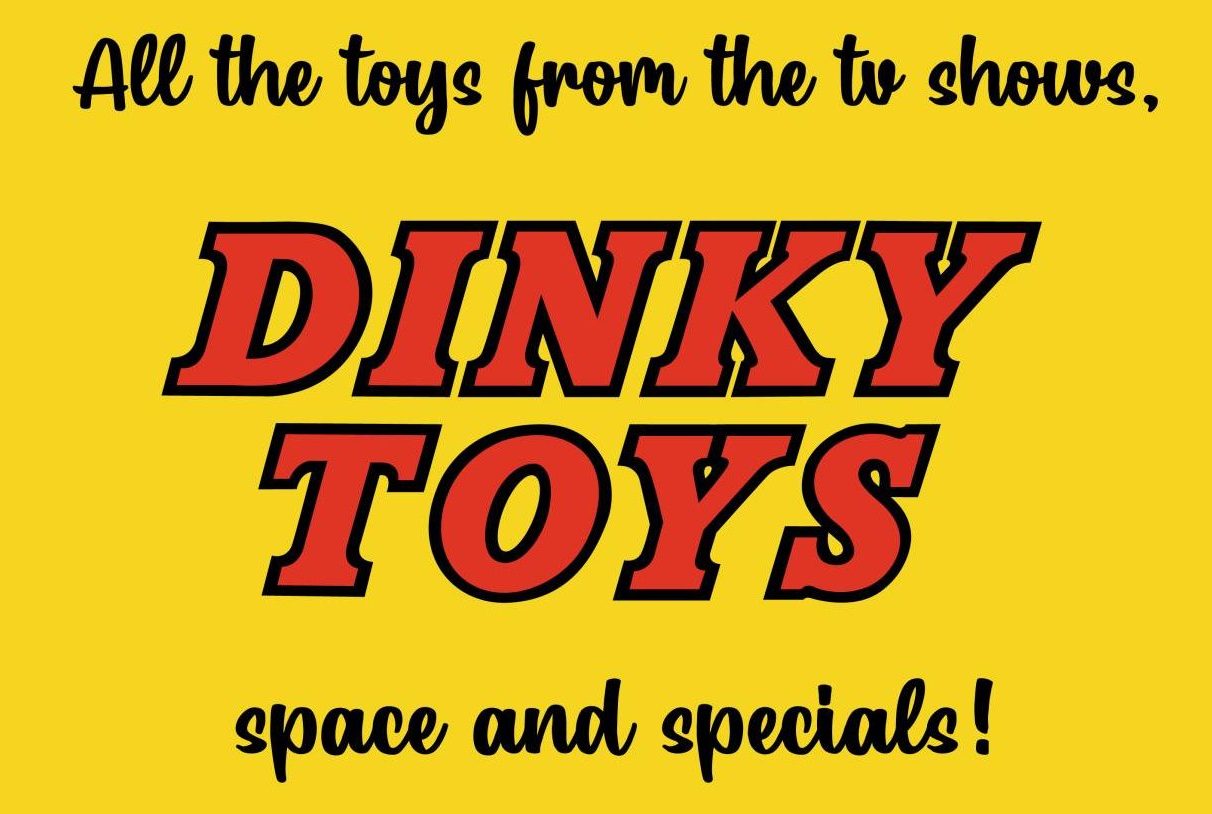
If only they’d made the engine pods a couple of inches longer, it wouldn’t look QUITE as disproportionate. I remember having collected the wonderful Space:1999 Eagles and UFO Interceptor, then feeling let down by this release. While the action features were fun, the lack of accuracy was such an incredible disappointment after seeing how spot-on the Anderson releases were. Oh well, I guess I should’ve been grateful they didn’t paint it green, in line with the Eagles and Interceptor LOL.
LikeLiked by 2 people
And why not make the struts that hold the engines up out of metal as well? They should be sturdier to support the weight of the engine pods ( This is not only true of Dinky, but of other die cast companies who’ve also manufactured Enterprise replicas ).
LikeLike
There was a small variation on the first release. The original ones that a friend and I got in 1976 had vinyl decals on the engines ( the same material used on the large nameplate on the top of the saucer ). After that year, they were released with the paper decal instead. I don’t really understand why they made the change. I assume it was some kind of cost cutting measure, but it was a poor decision. The vinyl decals clung to the toy much better. The paper ones always came loose at the top and bottom, without fail ( even when the toy was new in the box and unplayed with ).
LikeLike
Thanks for the info, I’ll need to keep a look out for this variant. You don’t by any chance have any photos of the decals do you?
LikeLike
I’ve found one online at http://www.apieceoftheaction.net/2009/10/dinky-toys-spotlight-uss-enterprise-358.html?m=1
You can see the vinyl decals on the engine nacelles clearly in the left side profile picture. It’s just like the one I had in 1976.
LikeLike
Does anyone know of a tear down of the dinky Enterprise? I intend to do a restoration.
LikeLike
I’m trying to figure out how to disassemble the nacelles from the pylons
LikeLike
Mine did not have a shuttle craft – instead a Thunderbird 4! Guess they ran out of shuttle craft?
LikeLiked by 1 person
Hi there.
Mine also came supplied with Thunderbird 4, insread of the shuttle, it also had white projectiles which my parents concerned could be mistaken as peppermints.
LikeLike
I have a White Shuttle with my 358 Star Trek Enterprise. It seems to be original and not a repro. Has anyone heard of this?before? I have photos but I cannot see how to send them the the site.
LikeLike
18 months later, I found one on eBay and bought it. It looks genuine. Cheers Kevin
LikeLike
Was the Motion Picture Dinky Enterprise, actually produced. I have never see. That before.
LikeLike
Hi Richard, I don’t believe it was ever commercially released and I’ve not seen the prototype either so I suspect there are very few if any still in existence. Cheers Kevin
LikeLike